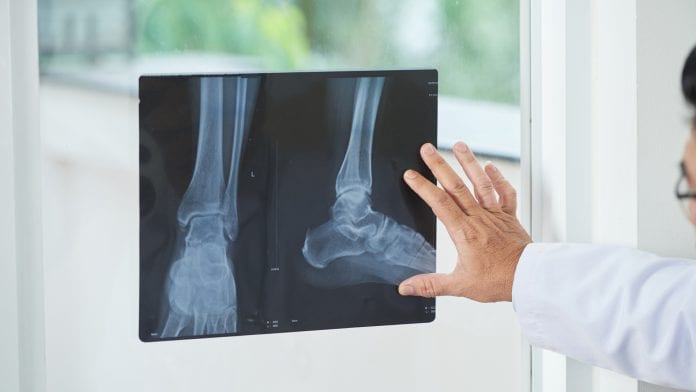
A team of scientists has used nanotechnology to detect bone-healing stem cells which could eventually lead to new treatments for major bone fractures and the repair of lost or damaged bone.
The team of physicists, chemists, and tissue engineering experts at the University of Southampton have developed a new way of using nanomaterials to identify and enrich skeletal stem cells.
The researchers say this new technique is simpler and quicker than other methods and up to 50 to 500 times more effective at enriching stem cells.
The study has been published in ACS Nano.
Seeking out healing stem cells
By using specially designed gold nanoparticles the team sought out specific human bone stem cells – creating a fluorescent glow to reveal their presence among other types of cells, allowing them to be isolated or ‘enriched’.
In laboratory tests the team, led by Professor of Musculoskeletal Science, Richard Oreffo and Professor Antonios Kanaras of the Quantum, Light and Matter Group in the School of Physics and Astronomy, used the gold nanoparticles, which are tiny spherical particles made up of thousands of gold atoms, that had been coated with oligonucleotides (strands of DNA), to optically detect the specific messenger RNA (mRNA) signatures of skeletal stem cells in bone marrow.
When detected, the nanoparticles release a fluorescent dye which makes the stem cells distinguishable from other surrounding cells under microscopic observation. They can then be separated using a sophisticated fluorescence cell sorting process.
Professor Oreffo said: “Skeletal stem cell-based therapies offer some of the most exciting and promising areas for bone disease treatment and bone regenerative medicine for an aging population. The current studies have harnessed unique DNA sequences from targets we believe would enrich the skeletal stem cell and, using Fluorescence Activated Cell Sorting (FACS) we have been able to enrich bone stem cells from patients.
“Identification of unique markers is the holy grail in bone stem cell biology and, while we still have some way to go; these studies offer a step change in our ability to target and identify human bone stem cells and the exciting therapeutic potential therein.
“Importantly, these studies show the advantages of interdisciplinary research to address a challenging problem with state of the art molecular/cell biology combined with nanomaterials’ chemistry platform technologies.”
Professor Kanaras said: “The appropriate design of materials is essential for their application in complex systems. Customising the chemistry of nanoparticles, we are able to program specific functions in their design.
“In this research project, we designed nanoparticles coated with short sequences of DNA, which are able to sense HSPA8 mRNA and Runx2 mRNA in skeletal stem cells and together with advanced FACS gating strategies, to enable the assortment of the relevant cells from human bone marrow.
“An important aspect of the nanomaterial design involves strategies to regulate the density of oligonucleotides on the surface of the nanoparticles, which help to avoid DNA enzymatic degradation in cells. Fluorescent reporters on the oligonucleotides enable us to observe the status of the nanoparticles at different stages of the experiment, ensuring the quality of the endocellular sensor.”
The research was conducted in collaboration with Professor Tom Brown and Dr Afaf E-Sagheer of the University of Oxford, who synthesised a large variety of functional oligonucleotides.
The scientists are now applying single-cell RNA sequencing to the platform technology to further refine and enrich bone stem cells and assess functionality and propose to move to clinical application with preclinical bone formation studies to generate proof-of-concept studies.









